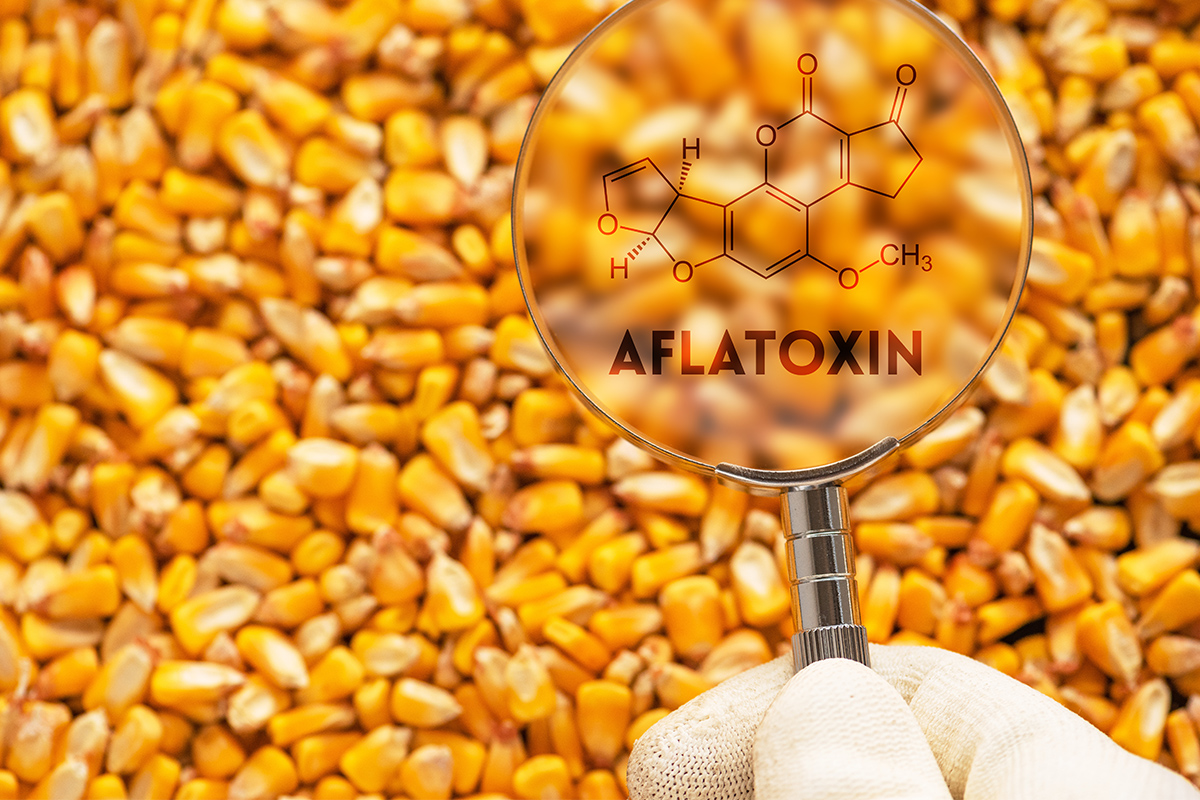Why am I Gaining Weight Despite Diet and Exercise? │ QA
If you’re careful with your nutrition, working out weekly, and still experiencing problems with your weight, take a moment to read this QA.


Hi, I’d like to know some good ways to cut calories for people with low blood sugar issues (hypoglycemia). It can be hard to cut caloric intake with approaches like intermittent fasting and meal replacement shakes because that causes blood sugar levels to drop. So, I’d like to know the best way to obtain a calorie deficit when there are limitations like hypoglycemia in play. Thank you for your help!
– Michael B.

When people experience hypoglycemia it’s usually as a drop after elevated blood sugar following a meal (called reactive hypoglycemia), rather than waking up with low blood sugar (fasting hypoglycemia). The best approach to restricting intake while avoiding a hypoglycemic event would be to modestly reduce intake throughout the day, particularly of refined carbohydrate.
Retaining protein, fiber and fat at an eating session will help slow carbohydrate absorption and blunt the initial spike in blood sugar. The analogy I like to provide is to consider a roller coaster – the greater the incline/peak, the greater the fall. Fun for a ride, but disaster for blood sugar stability. Keeping blood sugar steady is the goal, so consuming foods that minimize a spike to begin with is part of the approach. Stick to complex carbohydrates from starches along with your protein foods, vegetables, fruit, dairy and nuts/seeds.
Consider cutting down portions slightly at each meal and snack. You’ll hardly notice a difference in satiety from eating three-quarters of your normal volume. And leave the side of bread/rolls/tortillas, only eating those that are the main part of the entrée. For example, no garlic bread necessary if you’re eating pasta and skip the side of toast with your omelet and home fries.
– Debbie J., MS, RD
This article should not replace any exercise program or restrictions, any dietary supplements or restrictions, or any other medical recommendations from your primary care physician. Before starting any exercise program or diet, make sure it is approved by your doctor.
Some questions have been edited for length and/or clarity.
 Have a nutrition question? Our registered dietitian is ready to help!
Have a nutrition question? Our registered dietitian is ready to help!
Email nutrition@lafitness.com or submit your question below and it may be featured in an upcoming article!
If you’re careful with your nutrition, working out weekly, and still experiencing problems with your weight, take a moment to read this QA.
Blood sugar control isn’t easy. These are Debbie’s top recommendations for how to address weight control with Type II Diabetes.
Does Intermittent Fasting give you enough time to pack the day's protein? Our registered dietitian helps clear up the confusion!


I’m hearing a lot about the dangers lurking in certain foods and keep seeing mycotoxins on the list. What are these, where are they, and what’s the risk? I’m going crazy trying to avoid contaminants! It seems nothing is safe.
– Karen H.

No foods are truly 100% safe or non-perishable. Although we typically think of spoilage and rotting from visible bacterial growth and pest infestation, contamination of food can also be hiding from the naked eye. It’s said that mycotoxins are present practically everywhere in trace amounts and are unavoidable.
According to the World Health Organization, “mycotoxins are toxic compounds that are naturally produced by certain types of molds (fungi).” Health effects from these toxins range from acute poisoning to immune deficiency and death. Mycotoxin-producing molds can grow on numerous foods such as cereals, dried fruits, corn, peanuts, coffee beans, nuts and spices. Fox News reported in 2015 that “in the United States aflatoxin contamination is most common is the Southeast in peanuts and corn products.” Aflatoxins are a type of mycotoxin known to cause liver cancer. Other major mycotoxins include citrinin, deoxylnivalenol, fumonisins, ochratoxin, patulin, trichothecenes and zearatenones.
The good news: Contaminated foodstuffs (either visibly or tested) are not permitted in developed countries’ marketplace. The FDA has set very strict tolerance levels for certain mycotoxins present in crops.
The bad news: In the U.S., agricultural products kept within state lines and animal feeds are not subject to FDA limits. Additionally, through the food chain, the consumption of even tiny amounts of mycotoxins can have a cumulative effect. This is evident in livestock, eggs and dairy products.
How to avoid mycotoxins, then? You can reduce mycotoxin exposure by obtaining your raw food (whether conventional or organic) from trusted sources that adhere to federal and state safety testing and from local farmers’ markets (short storage periods). Of course, it could also be that reducing consumption of animal products, corn and peanuts may reduce your chance of exposure.
Additional sources:
– Debbie J., MS, RD
This article should not replace any exercise program or restrictions, any dietary supplements or restrictions, or any other medical recommendations from your primary care physician. Before starting any exercise program or diet, make sure it is approved by your doctor.
Some questions have been edited for length and/or clarity.
 Have a nutrition question? Our registered dietitian is ready to help!
Have a nutrition question? Our registered dietitian is ready to help!
Email nutrition@lafitness.com or submit your question below and it may be featured in an upcoming article!
If you’re careful with your nutrition, working out weekly, and still experiencing problems with your weight, take a moment to read this QA.
Blood sugar control isn’t easy. These are Debbie’s top recommendations for how to address weight control with Type II Diabetes.
Does Intermittent Fasting give you enough time to pack the day's protein? Our registered dietitian helps clear up the confusion!


Hello! I would really like to know what I can do to keep my hair from falling out. I seem to have had thinning hair that falls out easily for as long as I can remember. What is the best nutrient for hair regrowth, and how can I prevent it from falling out in the first place? Thank you!
-Melanie K.

There are several nutrients necessary for healthy hair, the fastest growing tissue in the body. What action to take for re–growing hair would depend on the cause of the hair loss. Rarely due to a nutritional deficiency, alopecia often results from stress, medications, hormonal changes, and certain medical conditions. Thinning of head hair is associated with genetics and aging. The American Academy of Dermatology recommends seeing a clinician to determine the cause of hair loss and offers tips on preventing loss.1
If a nutritional balance is to blame, the likely culprits are a deficiency of iron, zinc, or protein. Additionally, niacin deficiency, sudden weight loss, over supplementation, and essential fatty acid deficiency may be suspect.2 The best sources of problem nutrients include beef, pork, lamb, shellfish, fatty fish, poultry, eggs, beans/legumes, oatmeal and avocados. See our previous Healthy Living Blog article on targeting certain foods for hair growth.
Providing adequate essential nutrients will help stimulate hair follicles but focus on food first.3 Don’t supplement without first knowing that you need to. Toxicity of minerals and fat-soluble vitamins more readily occurs via supplements than from food. You can actually promote hair loss with too much vitamin A!
References:
1) “Hair Loss: Tips for Managing” https://www.aad.org/managing-tips
2) Guo EL, Katta R. Diet and hair loss: effects of nutrient deficiency and supplement use. Dermatology Practical & Conceptual. 2017;7(1):1–10. Published 2017 Jan 31. doi:10.5826/dpc.0701a01
3) Jessica Levings. Hair Growth Supplements. Today’s Dietitian. Sept, 2017; 19 (9): 40
– Debbie J., MS, RD
This article should not replace any exercise program or restrictions, any dietary supplements or restrictions, or any other medical recommendations from your primary care physician. Before starting any exercise program or diet, make sure it is approved by your doctor.
Some questions have been edited for length and/or clarity.
 Have a nutrition question? Our registered dietitian is ready to help!
Have a nutrition question? Our registered dietitian is ready to help!
Email nutrition@lafitness.com or submit your question below and it may be featured in an upcoming article!
If you’re careful with your nutrition, working out weekly, and still experiencing problems with your weight, take a moment to read this QA.
Blood sugar control isn’t easy. These are Debbie’s top recommendations for how to address weight control with Type II Diabetes.
Does Intermittent Fasting give you enough time to pack the day's protein? Our registered dietitian helps clear up the confusion!


It’s a little awkward to talk about but I need some remedies for constipation. We all have it at some point but for me it seems ongoing! What can I do? I’ve heard that papaya enzymes can help. Thank you for your time.
– Andre F.

What goes in must come out! Even people on temporary liquid diets still create poop. For chronic constipation be sure to get checked by your physician to rule out any underlying medical cause. Home remedies for constipation include:
Drink adequate fluids – target 0.5 fluid ounces per pound of body weight minimum per day. Strains from both Lactobacillus and Bifidobacterium genuses are employed for constipation relief, as are Activia® yogurt and Yakult® drink. Consuming adequate fiber, both soluble and insoluble, helps to promote regularity.1
Aim for 25-30 grams total dietary fiber per day from vegetables, fruits, whole grains, legumes and nuts/seeds. Exercises that may benefit the gut include yoga, squats, lunges and aerobic workouts. Reducing stress may also help improve intestinal flow.
Enzymes such as in papaya and pineapples, help to break down amino acid strands thus promote efficient digestion of proteins. Theoretically digestive enzymes would reduce the amount of waste to your large intestines, but they’ve not been proven effective to relieve constipation.
Resources:
– Debbie J., MS, RD
This article should not replace any exercise program or restrictions, any dietary supplements or restrictions, or any other medical recommendations from your primary care physician. Before starting any exercise program or diet, make sure it is approved by your doctor.
Some questions have been edited for length and/or clarity.
 Have a nutrition question? Our registered dietitian is ready to help!
Have a nutrition question? Our registered dietitian is ready to help!
Email nutrition@lafitness.com or submit your question below and it may be featured in an upcoming article!
If you’re careful with your nutrition, working out weekly, and still experiencing problems with your weight, take a moment to read this QA.
Blood sugar control isn’t easy. These are Debbie’s top recommendations for how to address weight control with Type II Diabetes.
Does Intermittent Fasting give you enough time to pack the day's protein? Our registered dietitian helps clear up the confusion!


I have a question about gut health. How good are probiotics and is it safe to take Acidophilus every day? How does it help the body? Is it better than taking a laxative? Thanks!
– Myra

I count lots of questions, so we’ll tackle them one at a time!
1. Probiotics’ benefit: True probiotic microorganisms are very beneficial, provided that they are in adequate amounts of verified strains shown to have effect. That means certain probiotic sources/foods are good1, while others might be duds whose bacterial colonies simply don’t form significantly stable populations in the human gut2. The term “probiotic” is often misapplied to products.
Positive effects on health may include immune stimulation, prevention of infection, promotion of regularity, relief of inflammatory bowel disease, cancer suppression, and modulation of brain activity, promoting mental wellness2,3. See www.USProbioticGuide.com for a list of commercial products and the level of evidence for their probiotic strains’ application in certain conditions.
2. Acidophilus safety: Lactobacillus acidophilus is a type of bacteria found in your intestines and in several fermented foods such as yogurt, keifer, sauerkraut and tempeh. As a supplement, daily consumption is considered generally safe1,4, but may contribute to constipation4 and other digestive complaints, so monitor for side effects.
3. Acidophilus effectiveness: L. acidophilus supplementation may protect against traveler’s diarrhea, have anti-fungal activity, and prevent bacterial UTI and vaginal infections3,4. Those wishing to take this probiotic in supplement form should find one with at least one billion CFUs per serving.
References:
– Debbie J., MS, RD
This article should not replace any exercise program or restrictions, any dietary supplements or restrictions, or any other medical recommendations from your primary care physician. Before starting any exercise program or diet, make sure it is approved by your doctor.
Some questions have been edited for length and/or clarity.
 Have a nutrition question? Our registered dietitian is ready to help!
Have a nutrition question? Our registered dietitian is ready to help!
Email nutrition@lafitness.com or submit your question below and it may be featured in an upcoming article!
If you’re careful with your nutrition, working out weekly, and still experiencing problems with your weight, take a moment to read this QA.
Blood sugar control isn’t easy. These are Debbie’s top recommendations for how to address weight control with Type II Diabetes.
Does Intermittent Fasting give you enough time to pack the day's protein? Our registered dietitian helps clear up the confusion!
Be the first to know about exclusive
content, deals and promotions